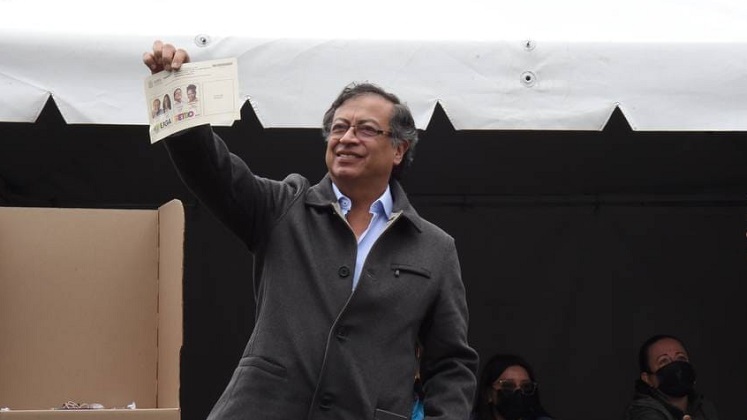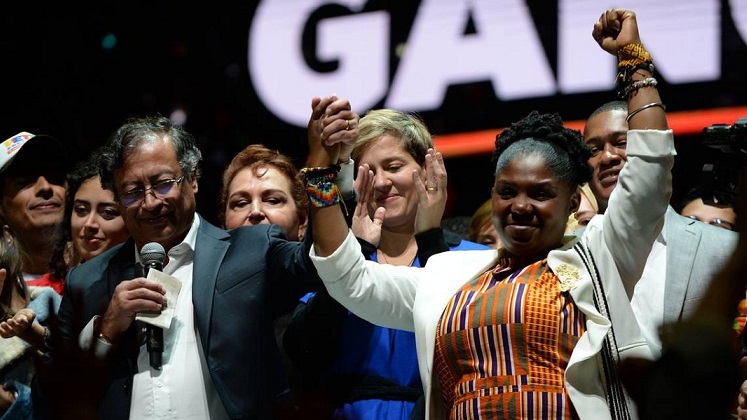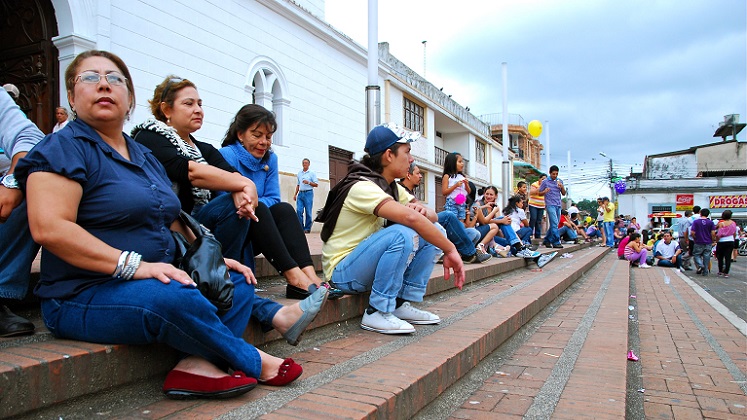Gustavo Petro has been labelled the first leftist to win the Colombian presidency. But from the historical perspective, Alfonso López Pumarejo, president in the 30s and 40s, fitted in a liberal and working-class spectrum, as Charlotte Eaton (LSE International History) resembles.
Lee este post en español
In a historic result for Colombian politics, Gustavo Petro and Francia Márquez won the 2022 presidential election with 50.5% of the votes on June 19. The ex-revolutionary leader and social and environmental activist overcame their opponent – political outsider Rodolfo Hernández – by 3.2 percentage points in the run-off election. On the evening of the results, thousands came out into the streets to celebrate the victory, while others were concerned about what a Petro presidency could bring.
Petro represents the change the country, tired of the political establishment, longed for. The new president-elect promises to tackle corruption, socio-economic inequality, and environmental degradation. But for many Colombians, it isn’t easy to accept him. The consequences of the unofficial civil war between guerrilla and paramilitary groups remain. Many don’t approve of the candidate, who was active in the revolutionary movement M-19, established after an allegedly fraudulent election in 1970 and demobilised in 1990 with a peace deal with the Colombian government.
It has almost become a requirement to label Petro as Colombia’s first leftist president in any coverage of the Colombian elections. Yet such statements do not hold up to historical examination. At least in terms of how individuals perceived him at the time, there has been at least one left-wing president in Colombia’s recent history.
Liberalism with nuances
Alfonso López Pumarejo ruled Colombia for two non-consecutive terms. His first presidency ran from 1934 to 1938 and from 1942 to 1945 when he resigned from office. López Pumarejo and his cabinet belonged to the Colombian Liberal Party, and their politics were undoubtedly more to the left of the spectrum. Key members of his government, including Foreign Minister Gabriel Turbay, adhered to socialist ideologies in their youth and López’s presidency – particularly the first term – may hold many lessons for the new Petro administration.
In the early twentieth century (and, in fact, for most of its political history prior to 1960), Colombia only had two major political parties: the Liberals and the Conservatives. There were a handful of smaller groups, especially following the global rise of fascism and communism in the interwar period. Still, anyone with presidential aspirations would have to belong to either the Liberals or the Conservatives. Indeed, Jorge Eliécer Gaitán, labelled Colombia’s first leftist presidential candidate, and assassinated during his presidential campaign in 1948, abandoned his National Leftist Revolutionary Union Party (UNIR) in 1935 when he realised it could not compete against the might of the Liberal party.
Such bipartisanism did not stop the strong political differences in Colombia but instead ensured that these were channelled through the two main parties in the form of factionalism. Back then, López was the leader of the ‘leftist Liberals’ and was recognised as such by members of both his own party and the opposition.
Although López’s government programme – known as the Revolución en Marcha – continued some age-old Liberal traditions such as increased secularisation of the state and greater educational independence, his main concern was increased working-class participation in society. The government passed measures to improve workers’ protection and legalised the right to strike for the first time in Colombia, and they got closer to other left-wing groups. The president never officially labelled his administration a Popular Front government – a coalition of working-class and middle-class parties – but he certainly gave credence to his critics who did level such accusations. For example, during the 1936 Labour Day celebrations, López spoke from the balcony to reaffirm his reformist programme. Several political figures accompanied him, including the communist Gilberto Viera and the socialist Gerardo Molina.
It was this tendency towards working-class politics that was most contentious. Conservatives and moderate Liberals alike saw the spectre of communism hanging over López’s reforms. Before the 1930s, communism was not a pressing concern in Colombia. The Colombian Communist Party remained small, and, in the pre-Mao era, it was considered that the nation was too agricultural for such an ideology to really take hold. The outbreak of the Spanish civil war in July 1936 changed all that.

Fear of communism
With historical links to Latin America and the perceived parallels between the domestic situation of the two countries, Spain suddenly became the blueprint for what could happen in Colombia if communism was allowed to spread. López’s reformist programme was thrown into even starker relief. For Conservatives and the Catholic hierarchy, the Spanish conflict represented a ‘holy’ revolution against the ‘godless’ excesses of the Popular Front government, which were reflected in their own experience of López’s secularising reforms. Moderate Liberals saw in the widespread violence that erupted in the first few months of the war what could happen to democratic governments if they let themselves be taken over by revolutionary groups. They feared this was what López was inciting by his perceived alliance with the working class.
Unfortunately for López, his first presidential term overlapped with the eruption of hostilities in Spain. The same period was marked by an outbreak of spontaneous leftist violence. However, this was eventually brought under control by the Spanish government and ultimately proved futile as the Republicans lost the war. So whilst the opposition attacked the López administration for maintaining relations with the ‘barbaric’ Spanish Republic, society looked at his attempts at change through the lens of what was going on in Spain.
Every reform was compared to similar measures in pre-war Spain and analysed according to its likelihood of bringing the civil war in Colombia. In an increasingly polarised atmosphere, Congress became more and more reluctant to approve government policies. During a Cabinet meeting in May 1937, for instance, Ministers discussed how Congress’s negative attitude towards a proposed devaluation bill demonstrated its hostility to their government’s projects and possible disagreement with its overall policy. In the end, Alfonso López Pumarejo was forced to halt his reformist project a year and a half before his term ended.
Similar parallels have been drawn between a potential Petro government and the situation in Venezuela. Particularly around the 2018 elections, headlines regularly reported fears that Petro would turn Colombia into another Venezuela and that he could become a dictator. This is despite the fact that the current Constitution does not permit reelection. Following Petro’s victory, it seems plausible that any attempted change would be interpreted similarly. Although fears that his contender Rodolfo Hernández and current president Iván Duque would not accept the result have proved unfounded, much of Colombia’s political establishment and media networks remain hostile towards the president-elect.
Intense opposition eventually blocked Alfonso López Pumarejo’s revolutionary project; time will tell whether Gustavo Petro will be more successful. For now, the new leader has secured a decisive triumph and sent out a message of hope to the Colombian people. But, as the López experience shows, getting into power is only half the battle.
Notes:
• The views expressed here are of the author rather than the Centre or the LSE
• Please read our Comments Policy before commenting
• Banner image: Gustavo Petro and Francia Márquez on 19 June / Pacto Histórico (Facebook)






I am sad to see Colombia go Left. It is my favorite country in Latin America. I am wondering if it is safe to go there.